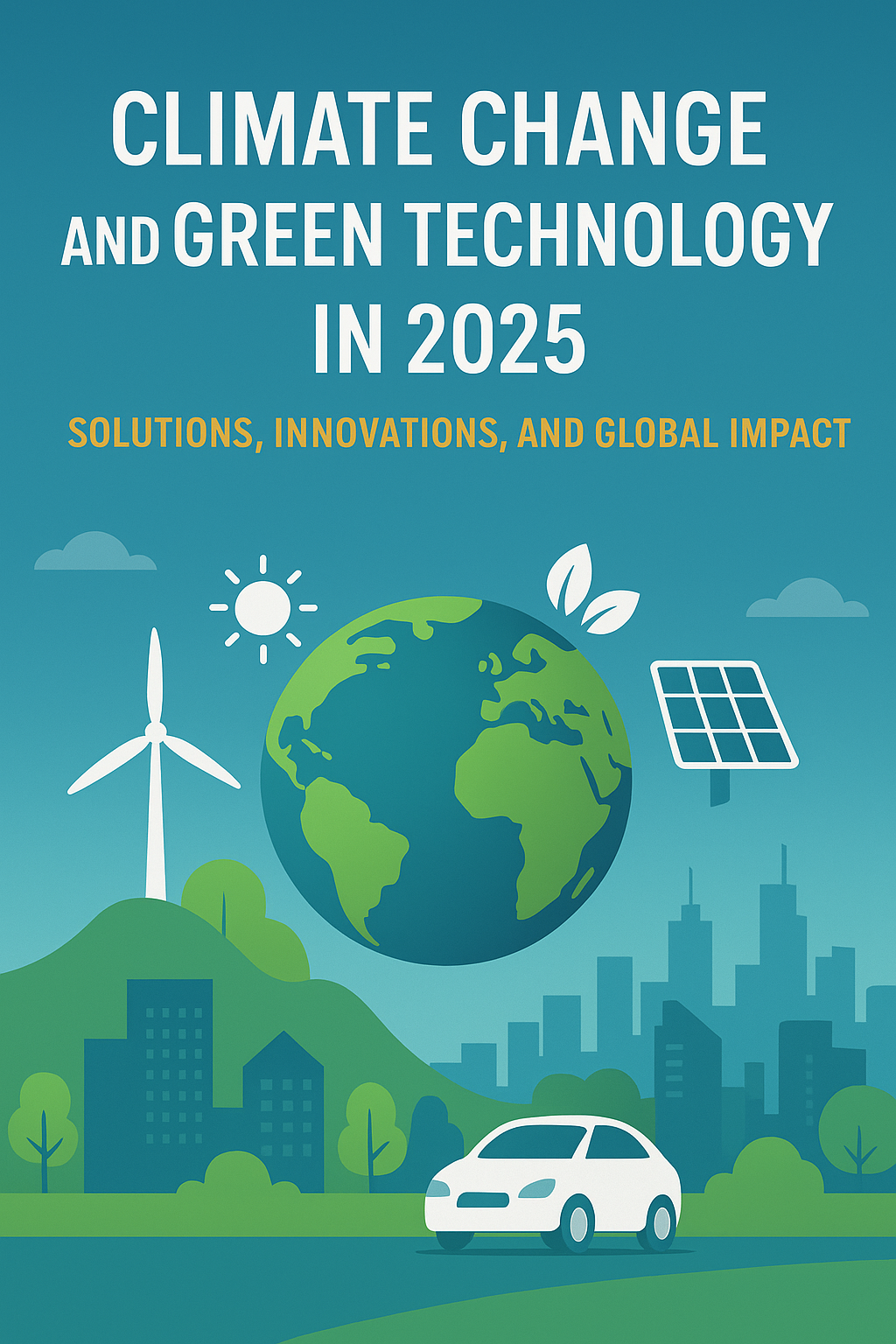Introduction
Climate change is the defining challenge of the 21st century. Rising temperatures, melting glaciers, extreme weather events, and biodiversity loss are no longer distant warnings—they are daily realities. The urgency to act has never been greater. In 2025, green technology has emerged as the most powerful weapon in humanity’s fight against climate change, offering sustainable solutions that combine science, innovation, and policy.
This blog explores how green technology is reshaping industries, protecting the planet, and redefining the way we live.
Historical Background of Climate Change Awareness
- 1970s–1980s: Scientific research identifies global warming as a major concern.
- 1992: Earth Summit leads to the first global climate agreements.
- 1997: Kyoto Protocol sets emission reduction targets.
- 2015: Paris Agreement unites nations in climate action.
- 2020s: Climate change accelerates, but green technologies mature rapidly.
Causes of Climate Change
- Fossil Fuel Dependence: Coal, oil, and gas burning for energy.
- Deforestation: Reduced carbon absorption due to loss of forests.
- Industrial Emissions: Greenhouse gases from factories and vehicles.
- Agriculture: Methane and nitrous oxide emissions from livestock and farming.
- Urbanization: Increased energy use, waste, and pollution.
Green Technology: The Game Changer
Green technology refers to innovations designed to reduce environmental impact and promote sustainability. Key areas include:
- Renewable Energy: Solar, wind, hydropower, and geothermal replacing fossil fuels.
- Green Buildings: Smart homes with energy-efficient materials and designs.
- Electric Vehicles (EVs): Transition from petrol/diesel cars to EVs and hydrogen-powered transport.
- Carbon Capture Technology: Machines and natural methods to absorb CO₂.
- Sustainable Agriculture: Precision farming, vertical farms, and organic practices.
- Waste-to-Energy Systems: Recycling and converting waste into usable resources.
Opportunities of Green Technology
- Job Creation: Millions of new jobs in renewable energy and sustainability.
- Economic Growth: Green startups and innovation hubs expanding rapidly.
- Health Benefits: Cleaner air, water, and reduced disease risks.
- Energy Independence: Reduced reliance on imported fossil fuels.
- Global Leadership: Countries leading in green tech gain political and economic influence.
Challenges and Barriers
- High Initial Costs: Renewable technologies need heavy investment.
- Technology Gaps: Developing countries lag in adoption.
- Political Resistance: Powerful fossil fuel lobbies slow progress.
- Consumer Habits: Reluctance to shift from conventional lifestyles.
- Resource Scarcity: Rare earth materials needed for green tech are limited.
Global Efforts and Policies (2025)
- European Union: Leading in renewable targets and climate neutrality by 2050.
- United States: Heavy investment in EV infrastructure and solar energy.
- China: Expanding green manufacturing and solar farms.
- India: National Solar Mission and Green Hydrogen initiatives.
- Africa & Latin America: Renewable microgrids transforming rural communities.
The Future Outlook (2025–2035)
- Smart Cities: Fully sustainable cities powered by renewable grids.
- Circular Economy: “Zero waste” becoming a mainstream policy.
- AI in Climate Action: Predicting weather patterns, managing energy.
- Global Carbon Market: Countries trading carbon credits for sustainability.
- Eco-Conscious Lifestyle: Sustainability becoming a consumer preference, not just an option.
Conclusion
Climate change is not a future threat—it is today’s reality. But green technology offers hope. With renewable energy, sustainable practices, and eco-innovation, the world can reduce its carbon footprint and build a more resilient future.
The real challenge is speed—can humanity adopt green solutions fast enough to keep global warming under 1.5°C? The future of the planet depends on it.

Leave a Reply